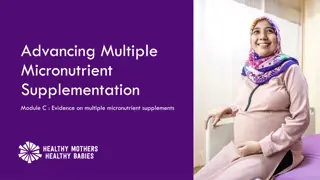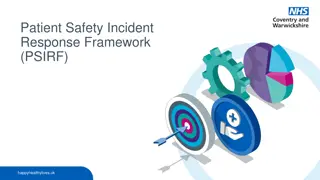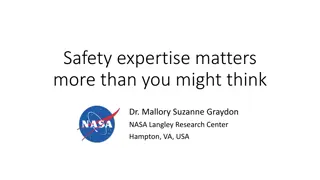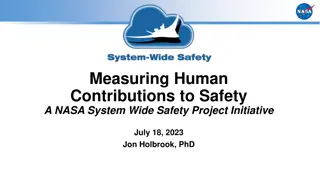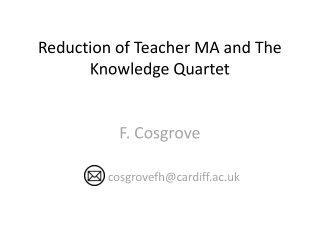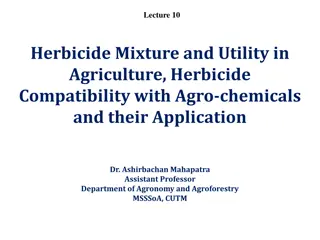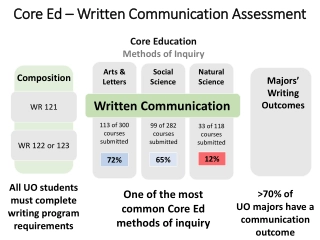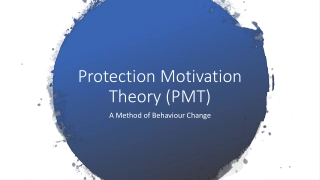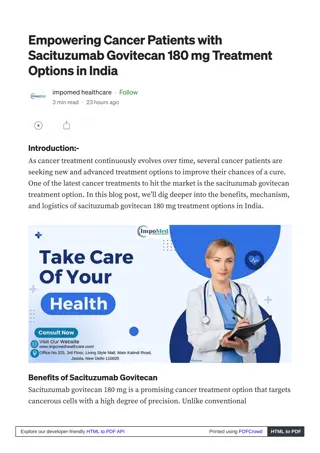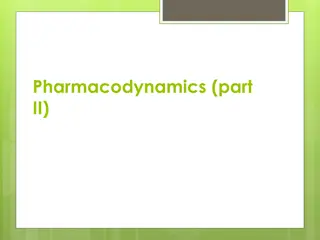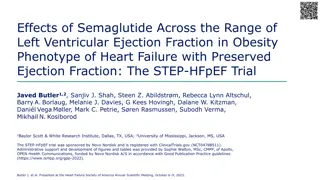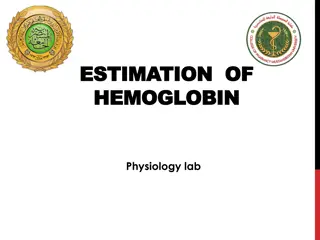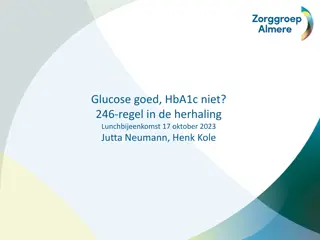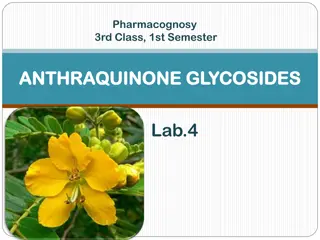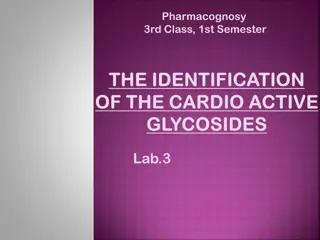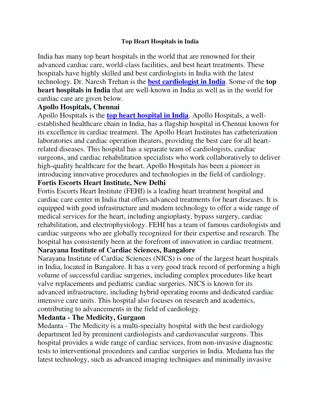Efficacy and Safety of Ferric Carboxymaltose for Heart Failure with Iron Deficiency
Iron deficiency is prevalent in heart failure patients with reduced ejection fraction and is linked to poor outcomes. The HEART-FID trial investigates the impact of intravenous ferric carboxymaltose (FCM) on all-cause mortality, heart failure hospitalizations, and exercise capacity in chronic HFrEF patients with iron deficiency. The design includes a double-blind, placebo-controlled, event-driven randomized controlled trial with specific dosing criteria based on iron levels. Statistical methods prioritize hierarchical composite endpoints and win ratio for clinical interpretation. Study execution involves 8195 enrolled participants to explore the efficacy and safety of FCM in this patient population.
Efficacy and Safety of Ferric Carboxymaltose for Heart Failure with Iron Deficiency
PowerPoint presentation about 'Efficacy and Safety of Ferric Carboxymaltose for Heart Failure with Iron Deficiency'. This presentation describes the topic on Iron deficiency is prevalent in heart failure patients with reduced ejection fraction and is linked to poor outcomes. The HEART-FID trial investigates the impact of intravenous ferric carboxymaltose (FCM) on all-cause mortality, heart failure hospitalizations, and exercise capacity in chronic HFrEF patients with iron deficiency. The design includes a double-blind, placebo-controlled, event-driven randomized controlled trial with specific dosing criteria based on iron levels. Statistical methods prioritize hierarchical composite endpoints and win ratio for clinical interpretation. Study execution involves 8195 enrolled participants to explore the efficacy and safety of FCM in this patient population.. Download this presentation absolutely free.
Presentation Transcript
The HEART-FID Efficacy and Safety of Ferric Carboxymaltose as Treatment for Heart Failure with Iron Deficiency Trial On behalf the HEART-FID Investigators and Participants August 26, 2023
Background Iron deficiency (ID) is common in patients with heart failure with reduced ejection fraction (HFrEF) and it is associated with worse symptoms and adverse prognosis. IV ferric carboxymaltose (FCM) improves quality of life and exercise capacity in HFrEF with ID. AFFIRM-AHF, IRONMAN and meta-analyses suggested potential benefits with IV iron on HF hospitalizations without a significant effect on mortality. Thus, further evidence is needed regarding the effect of FCM on clinical events. Ponikowski P, et al. Lancet 2020;396(10266):1895-1904. Kalra PR, et al. Lancet 2022;400(10369):2199-2209. Graham FJ, et al. Eur J Heart Fail 2023;25(4):528-537. Anker SD, et al. Eur J Heart Fail 2023 (in press). Mentz RJ, et al. Circ Heart Fail 2021;14(5):e008100.
Design Double-blind, placebo-controlled, event-driven RCT Chronic HFrEF (EF 40%) with Iron Deficiency* Primary Endpoint: Hierarchical Composite: All-cause mortality (12 m) HF hospitalizations (12 m) Change in 6-MWD (6 m) Placebo (PBO) N ~ 3014 Visits every 3 mos and dosing every 6 m, as needed 6 m 12 m Top Secondary Endpoint: CV death or HF hospitalization 1:1 Randomization FCM Key Inclusion Criteria: *Iron deficiency Ferritin <100 ng/mL or 100-300 ng/mL + TSAT <20% FCM Dosing (every 6 m based on labs ) <50 kg 50kg Two doses of 15 mg/kg separated by 7 days Two doses of 750 mg separated by 7 days HF hosp (12 m) or NT-proBNP (90 d) [>600 pg/mL (NSR) or >1000 pg/mL (AF)] Once iron replete, transition to placebo; blinding maintained Mentz RJ, et al. Circ Heart Fail 2021 ClinicalTrials.gov Identifier: NCT03037931
Statistical Methods PRIMARY METHODOLOGY: Patients ranked from lowest to highest based on hierarchical composite Wilcoxon-Mann-Whitney test: Compared sum of ranks 2-sided significance of 0.01 (US regulatory purposes) Estimated 90% power with 1507 per group (N=3014) HIERARCHICAL PRIMARY ENDPOINT Placebo Group FCM Group vs. Yes Patient who survives (or survives longest) wins Death at 12 mos? P-value (Wilcoxon-Mann-Whitney test) < 0.01 No neither patient died TO SUPPORT CLINICAL INTERPRETATION WIN RATIO: Each participant from FCM group ranked for comparison with each participant from control group Patient who was not hospitalized (or has fewest hospitalizations) wins Yes Hospitalization(s) for HF at 12 mos? No neither patient hospitalized (or same number of hospitalizations) TOP SECONDARY ENDPOINT Time to CV death or HF hospitalization 2-sided significance level of 0.04 Anticipated HR set at 0.80 Target 771 participants with an event Estimated 90% power Patient with greatest improvement (or smallest worsening) in 6MWD wins Change in 6-MWD at 6 mos Mentz RJ, et al. Circ Heart Fail 2021
Study Execution Enrolled N = 8195 ENROLLMENT BEGAN March 2017 Excluded (N = 5127) 17 Consent not given 4652 Inclusion criteria not met 457 Exclusion criteria met 1 Screened in error RECRUITMENT ENDED November 2021 Randomized* N = 3065 FOLLOW-UP ENDED February 2023 Placebo N = 1533 FCM N = 1532 55 Discontinued the study early (other than death) 45 Discontinued the study early (other than death) 7 Lost-to-follow-up 4 Lost-to-follow-up Long-term Efficacy and Safety 48 Withdrew consent (end-of-study vital status known for all except 14) 41 Withdrew consent (end-of-study vital status known for all except 14) Median Follow-up of 1.9 years (IQR, 1.3 to 3.0) *3 patients randomized twice
Baseline Characteristics FCM Placebo (N=1533) 69 11 35% 86% 10% 47% 7% 46% Characteristics Age (yr) Women White race Black race North America Asia Pacific Europe (N=1532) 69 11 33% 86% 11% 47% 7% 46% EF (%) NYHA II / III-IV Ischemic etiology NT-proBNP (pg/mL) Hemoglobin (g/dL) eGFR (mL/min/1.73m2) ACEi or ARB / ARNI Beta-blocker MRA SGLT2i 31 7 52% / 48% 61% 1486 (727, 3045) 12.6 1.4 59 22 59% / 30% 92% 56% 8% 31 7 54% / 46% 59% 1424 (710, 2884) 12.5 1.4 61 22 60% / 29% 93% 55% 7% Presented as %, Mean SD or median (IQR)
Study Drug Dosing and Iron Indices Measure Number of injections median (IQR) Cumulative dose of FCM during year 1 mean SD Day 180 received placebo due to adequate iron repletion IV iron outside protocol (during follow-up) FCM 6 (4, 10) 1809 680 mg 82% 31 (2%) Placebo 6 (4, 10) N/A N/A 104 (7%) Ferritin ( g/mL) TSAT (%) FCM: PBO: 24 33 31 FCM: PBO: 56 289 254 800 23 24 25 57 66 65 60 Mean Ferritin Mean TSAT 600 ( g/mL) 40 (%) 400 20 200 0 0 Baseline Day 160 Day 340 Baseline Day 160 Day 340 Presented as %, Mean SD or median (IQR)
Primary Hierarchical Endpoint P-value (Wilcoxon-Mann-Whitney test) = 0.019 Total HF Hospitalizations (12 mos) Change in 6-MWD (6 mos) All-cause Mortality (12 mos) 450 15 200 400 180 158 332 160 350 297 131 10.3% 140 300 10 +8 (60) 120 Among 227 patients (14.8%) Among 204 patients (13.3%) 8.6% 250 100 200 80 150 +4 (59) 5 60 100 40 50 Placebo FCM Placebo FCM Placebo FCM 20 0 0 0 Total HF Hosp (N) Mean Change 6-MWD (m) Deaths (N, %) 270 fewer HF hospitalization days 1.7% ARR +4 meter benefit
Primary Endpoint: Win Ratio Overall Win Ratio (99%CI) = 1.10 (0.99, 1.23) 1stImputed Dataset: Death at 12 mos Wins 9.8% 20% more Wins Wins Win Ratio Ties 82.0% = OVERALL: 27 fewer deaths (1.7% ARR) 18% of Decisions Losses 8.2% Losses Similar % wins Hospitalizations for HF at 12 mos Wins 9.0% Ties 64.1% OVERALL: 18% of Decisions 35 fewer HF hospitalizations 270 fewer HF hospitalization days Losses 9.0% Change in 6-MWD at 6 mos Wins 33.5% 11% more Wins Ties 0.3% 64% of Decisions Losses 30.2%
Top Secondary Endpoint Time to Cardiovascular Death or First HF Hospitalization Placebo 494 / 1533 (32.2%) Target 771 patients with a first event HR (96% CI) = 0.93 (0.81 to 1.06) 17.3 (PBO) vs. 16.0 (FCM) events per 100 patient years FCM 475 / 1532 (31.0%) Observed 969 patients with an event Median Follow-up of 1.9 years (IQR, 1.3 to 3.0)
Time to CV Death HR (96% CI) = 0.86 (0.72 to 1.03) Placebo 275 / 1533 (17.9%) 8.2 (PBO) vs. 7.2 (FCM) events per 100 patient years FCM 251 / 1532 (16.4%) Median Follow-up of 1.9 years (IQR, 1.3 to 3.0)
Change in 6-MWD (from Baseline to 12 m) 6 mos 12 mos LS mean difference (96% CI) 4 meters (-1, 9) 0 meters (-6, 6)
Pre-specified Responder Analysis Change in 6-minute walk distance Odds Ratio (95% CI) vs. Placebo FCM Placebo Change from Baseline at 6 Months 41% 36% 1.24 (1.08, 1.44) Improved 10 m 31% 26% 1.27 (1.09, 1.49) Improved 20 m Change from Baseline at 12 Months 38% 31% 30% 26% Improved 10 m 1.32 (1.13, 1.53) Improved 20 m 1.24 (1.06, 1.45) 24% increase in the Odds of Response with FCM
Safety: Treatment Emergent AEs TEAEs 50% FCM Placebo Percentage of Patients 40% Hypophosphatemia 1 0 27.0% 30% 26.2% Hypersensitivity / Anaphylactoid reactions 7 1 20% Placebo FCM FCM Placebo 10% Placebo FCM 0% Hypophosphatemia (N=1) Unrelated to study drug (PI assessment); resolved and study drug was continued Angioedema (N=2) 1 probably related to study drug (PI assessment) - facial edema of moderate severity; resolved in hours with oral therapy Hypersensitivity (N=5) 3 probably related to study drug (PI assessment) - 1 of these being severe; all patients recovering
Summary HEART-FID is the largest study to assess the long-term safety and efficacy of IV FCM in HFrEF + ID. Well-powered for the primary and top secondary endpoint. FCM appeared safe and resulted in modest improvement for the hierarchical endpoint of all-cause mortality, HF hospitalizations and 6-MWD. This did not achieve the pre-specified statistical significance level based on a higher US regulatory threshold (P=0.019 with specified level of 0.01). While the observed differences in the primary endpoint were driven by the wins in death, the other components contributed to a larger proportion of decisions in the analysis. The totality of evidence with IV FCM from prior studies assessing symptomatic and functional status endpoints combined with clinical outcomes studies including HEART-FID, show overall safety and clinical benefits of IV FCM in HFrEF with ID.
Thank you! HEART-FID Investigator Teams, Sponsor, DSMB & Participants STEERING COMMITTEE, SPONSOR, KCR AND DCRI COORDINATING CENTER AF Hernandez, MD (PI); RJ Mentz, MD (Clinical Lead); J Butler, MD; CG De Pasquale, MBBS; JA Ezekowitz, MBBCh; GD Lewis, MD; E O Meara, MD; P Ponikowski, MD; RW Troughton, MBChB; YW Wong, MBBS; R Adamczyk, PharmD; D Aguilar; J Bambrick; N Blackman, PhD; K Moriarty; A Secci, MD; T Storie, MD; S Califf; AP Ambrosy, MD; D Blythe; S Carlino; B Franklin-Goode; J Garg; J Harrington, MD; P Lavender; S Mangum, RN; L Perkins; MD Samsky, MD; She L, PhD; D Stournaras; C Wilson; D LeLoudis; F Rockhold, PhD. KCR: K Lange; S Iesipov; S Wojcik. DCRI CEC: WS Jones, MD (CEC Co-PI); A DeVore, MD (CEC Co-PI). DATA AND SAFETY MONITORING BOARD K Mahaffey, MD (DSMB Chair); D DeMets, PhD; S Goodman, MD, MSc; Barry Greenberg, MD; Marvin Konstam, MD. COLLABORATORS CVC: T Temple; C Gubbels. SAHMRI: L Griffith; J Butters; D Sacca. GLCC: C Alsweiler; H White.
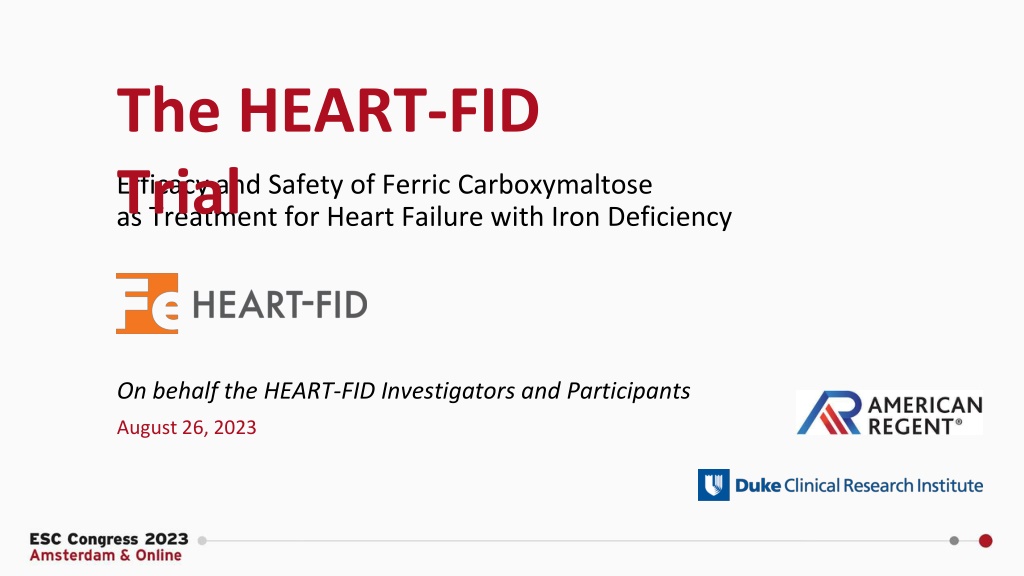

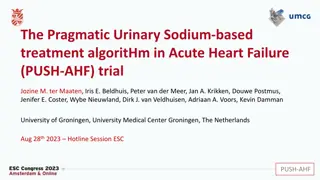
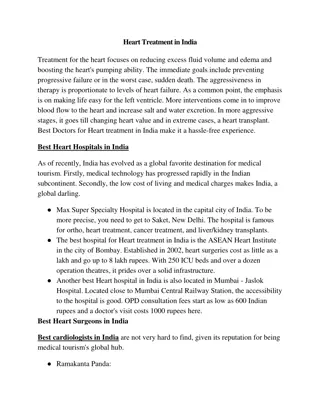

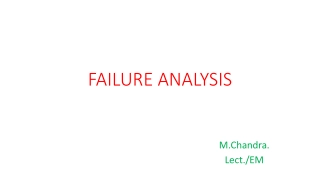
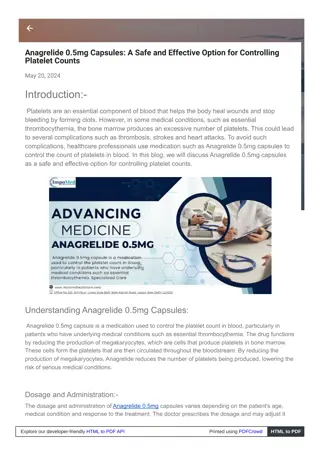
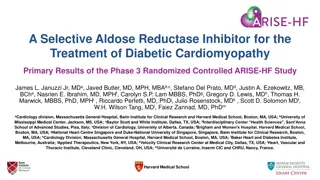

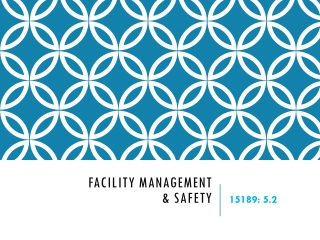



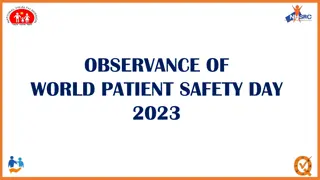

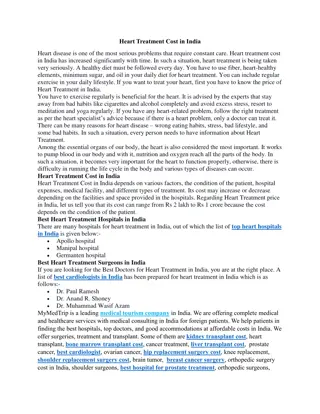


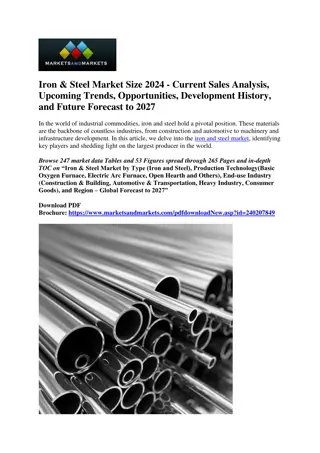

![READ⚡[PDF]✔ European Mail Armour: Ringed Battle Shirts from the Iron Age, Roman](/thumb/20552/read-pdf-european-mail-armour-ringed-battle-shirts-from-the-iron-age-roman.jpg)

